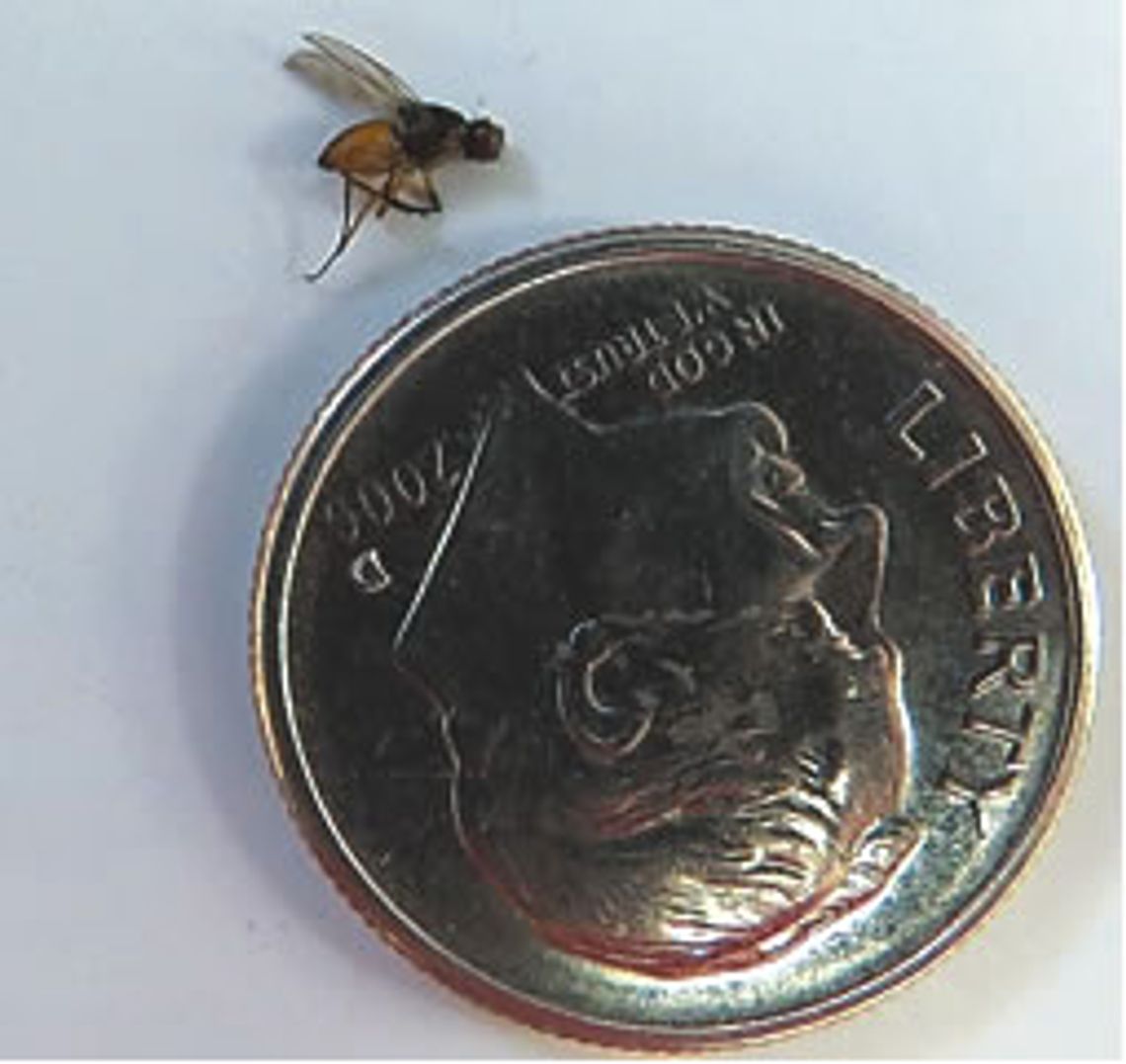Bermudagrass hay producers need to become familiar with a new pest, the Bermudagrass Stem Maggot. The Bermudagrass Stem Maggot is a new, non-native pest of bermudagrass hayfields that was first found in Georgia in 2010. They were first detected in Mississippi in mid-summer of 2012, and by the end of the growing season had spread to hayfields throughout the state.
Bermudagrass hay producers need to become familiar with this new pest because it has the potential to cause significant reductions in hay yields. Adult flies are about the size of horn flies and have yellow abdomens. The legless white larvae bore inside the tips of bermudagrass shoots, feeding down to the first internode and killing the shoot tip and emerging leaves. Damage is restricted to the two or three blades at the tip of the growing shoot, because the larvae do not feed past the first internode. This may seem like relatively minor damage, but heavy infestations can essentially stop a hayfield from growing.
When viewed from a distance, heavily infested fields look like they have suffered light herbicide injury or experienced a frost. Heavily infested fields have an unusual, bronzed appearance due to the large number of dead infested shoot tips. Such infestations have occurred across the Southeast, and yield reductions have been estimated to range from 20 to 50%. Fine-stemmed bermudagrass varieties, like most of those we currently grow, are most susceptible to attack, as are highly managed, well fertilized fields.
Populations tend to increase through the growing season, so if the previous cutting sustained significant injury, growers should assume damage will be higher during the next cutting, unless the field is treated. Pastures are not seriously affected, because grazing continually removes susceptible shoots. The same will be true for turf-type bermudagrass grown in lawns, sports fields and golf courses. The flies will attack these fields, but frequent mowing prevents serious damage. The Bermudagrass Stem Maggot is specific to Bermudagrass and does not attack other types of grasses.
We are still in the learning process about the best way to deal with the Bermudagrass Stem Maggot. With the insecticides that we currently have available, the larvae cannot be controlled once it has bored into the stem. Management depends on controlling adult flies before they lay eggs. Once a field has sustained heavy damage with a high percent of shoots infested, the best course of action is to harvest the field and prepare to control the flies in the next cutting. Stem Maggot populations are usually low in the spring and increase as the summer progresses. Infestations in the earlier cuttings of hay may not be high enough to cause significant damage, but the risk of damage increases for each successive cutting.
We need to base decisions on controlling Stem Maggots on the damaged sustained during the previous cutting. If a field had 15-20% more damaged shoot tips in the previous cutting, plan on treating for the Bermudagrass Stem Maggot in the next cutting by:
1. Harvesting the field and removing the bales.
2. Spray 5 to 7 days after harvest (as soon as the field begins to green up again).
3. Use a low rate of one of the pyrethroid insecticides that is labeled for fall armyworms.
(Mustang Max, Baythroid, or Karate Z).
4. Spray again 5 to 7 days later.
5. Cut as soon as maturity and weather will allow.
Source: Bug’s Eye View, No. 13 2021, Bermudagrass Stem Maggot


Comment
Comments